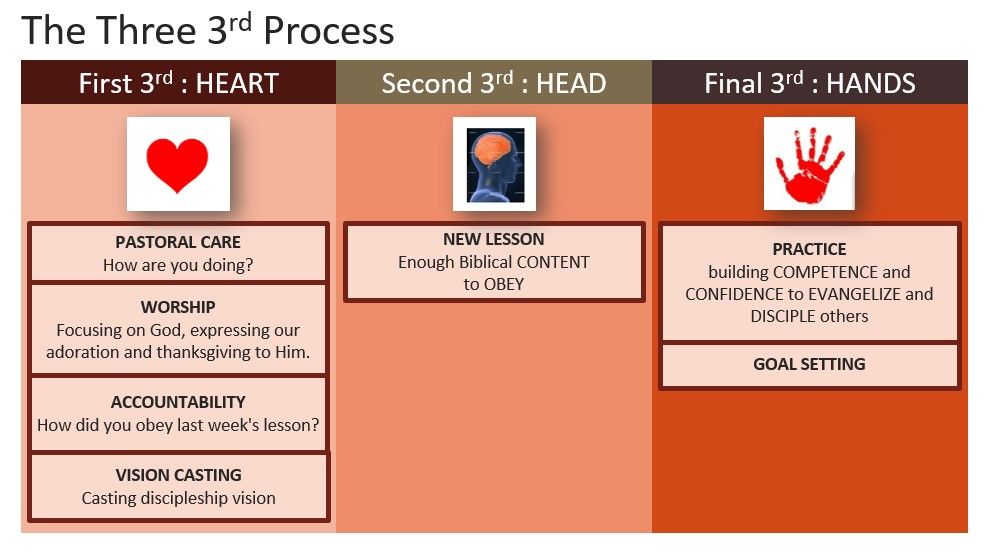When we started our last church plant, we began with a planning retreat for everyone who wanted to be a part of starting a new church. During that retreat we talked about a lot of things. We discussed the biblical definition of a church. We described our target area and target people and their religious beliefs. We evaluated our team members’ gifts and passions and did team-building activities. We formulated our vision and mission statements and our core values. Then toward the end of our retreat I said, we need to clarify our Exit Plan. They all looked at me strangely and said, “Exit Plan? We haven’t even started yet. Why are you talking about an exit plan? What do you mean by an exit plan?”
What is an Exit Plan?
An Exit Plan provides clear markers
that describe the essential elements
you want to see in place
and functioning properly
that will indicate to you
that your job is done here and it is time to transition out.
It could also be called a Transition Plan.
But…
Why have an Exit Plan before you even start?
1. It avoids sideways energy
An Exit Plan helps you not put time, energy, and resources into good things that don’t help you get to where you as a team want to go.
When we start the plant, we have nothing but
the team. The bullseye is where we want to be.
The arrow is the strategies and activities that will take us towards the Bull’s Eye. We ask,
What is the best way to get from here to there?
All the activities can be measured by how they move the organization forward towards the goal. The Exit Plan spells out that
goal in measurable details and helps us
know what not to use our energies on. Is it moving us forward in our vision or is it not? If not, we won’t put our efforts or time there.
2.
It keeps the team focused
It keeps all team members focused and working together on clear goals. All are pulling in the same direction.
One of the members of our start-up team was eager to be a part of the new church plant. But along the way, it became clear that his end product was different than ours. It was good, but different. He wanted to start an activity center, livelihood projects, a job training program. I had to keep bringing him back to what we were doing. We had agreed on the Mission and Vision and Exit Plan, and we had spelled out what the essential things were that we needed to develop to reach our vision.
Eventually, he felt called to leave and start his own work, and I encouraged him to do that because it was a good idea, it just wasn’t what we had agreed on. It would have sapped our energy and people away from what was important.
3.
It helps define short and long-term goals
At the beginning of our work, I personally, and then we together as a team, spent a lot of time developing and praying over the vision of what kind of church we were trying to plant. We had spent a lot of time talking about what kind of a disciple we wanted this church to produce. Once we had clarified the vision of the church and of the disciple, we worked backwards in setting long and short-term goals. If that’s where we want to end up, how do we get there?
What needs to be in place for this to be that kind of a church and for this church to go on producing this kind of disciple into the future?
Each year at our annual evaluation and planning retreat we pulled out our Exit Plan and said, “What have we got in place of these 8 pillars, and what can we add in the coming year?” Maybe we had 4 of the 8 points of our Exit Plan functioning and we decided that year to work on 2 additional points moving us toward our vision of a healthy, missional, reproducing church in that place.
4.
It inspires and encourages the team
Because working at discipleship and working with people is often messy, it’s hard to measure progress and it can be discouraging not to be able to identify
success markers. I sometimes thought, “It must be nice to be a Bible translator because at least you know when your job is done and how many verses are left to translate.” It’s not that clear with people. But having a clear Exit Plan can encourage you and let you see clear markers to your work, and help you measure your progress.
5.
It helps you not stay too long or leave too soon
I remember one time when we were young and new in the Philippines, someone told me about an older missionary couple who had been in one place in the Philippines for over 30 years. I had two conflicting responses in my mind:
- Respect for their commitment and perseverance
- The question, “WHY?” (Why are they still there? Have they accomplished what they came to do? What did they come to do?)
The national, denominational leaders told us there were two kinds of missions – ones that stayed too long and ones that left too soon. And so we worked on an Exit Plan that would help us know when it was the right time to transition out.
Some thoughts:
- Exit Plans are not about numbers but qualities, people and systems at work.
- It doesn’t mean you can’t turn things over until the end. The transition can be gradual as various aspects are turned over to the local believers along the way. In this way, the church planter can hone in on preparing the church for the remaining aspects.
- The Exit Plan helps us work intentionally and with focus. We recognize that the Lord can cut short our stay, so we make our Exit Plan but also put our trust in the Lord.
Respond: What self-perpetuating roles, practices, processes or conditions need to be in place and locally run before you would consider the new church able to continue on its own? In the comment section below, list some processes or practices or people that you feel need to be in place for the church to prosper on its own.
In our next post we will look at two examples of Exit (or Transition) Plans.













